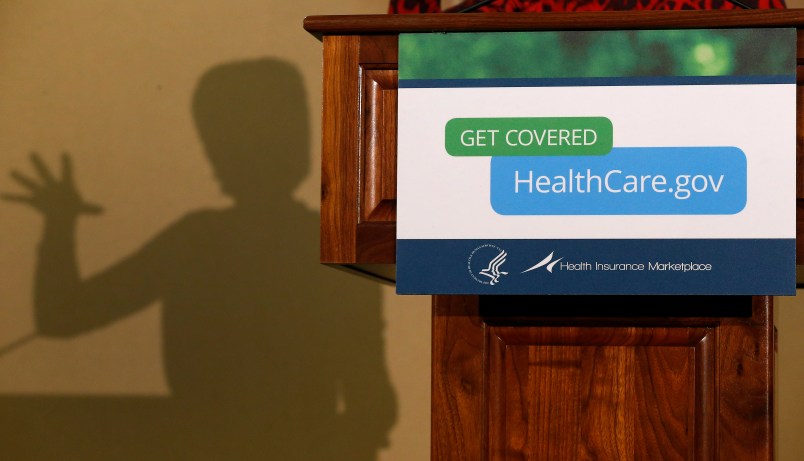The end of November has arrived, as has the Obama administration’s self-imposed deadline to get HealthCare.gov working smoothly for the vast majority of users.
So how will we know if it is?
The White House’s bottom line is: The site’s capacity has now been doubled to handle 50,000 users at a time, up to 800,000 per day. In a briefing with reporters Tuesday, Jeff Zients, who has been tasked with overseeing the fixes, said that the administration believes that’s enough capacity to meet demand.
There will be times when the site isn’t working perfectly, Zients acknowledged. A senior administration official told TPM that HealthCare.gov sometimes saw as many as 250,000 users at once during its first month.
But is increased capacity really much of a metric? One reporter pressed Zients to offer something more precise.
“How will we know that you’ve met that goal?” the reporter asked. “Just because you guys say so?”
Zients didn’t exactly answer.
“The vast majority of consumers will be able to fill out applications, shop, compare plans and enroll in insurance,” Zients said.
“So you’re not tracking how many people are completing the whole process?” the reporter asked. “You’re not releasing that information to us?” That 80 percent or some number?”
“We will continue to update you on metrics and user experience and our success rates as we go forward,” Zients said.
In other words: To Be Determined.
Even as the administration was touting the improvements with the site, it announced Wednesday that the online marketplace for small business was being delayed for a full year.
The Washington Post reported that the White House’s internal goal was that 80 percent of users would be able to complete the process and enroll in health coverage.
Though precision might be difficult, it is undeniable that the site is performing better. Earlier this month, Zients offered a number of hard metrics to prove it: the error rate and response times had decreased exponentially from their heights during the site’s troubled opening month.
He and other contractors outlined how the administration has achieved that improvement. The work is divided into three groups: one to watch for problems with the site in real time, one to oversee hardware improvements (adding new servers, that sort of thing), the other to write new code and otherwise fix some of the problems that have been identified.
They’re spread across the Washington, D.C., metropolitan area, from the Maryland suburbs to Virginia, and they’re in constant contact, Zients said. Twice daily calls are held to ensure that each piece of the team knows what the others are doing. Some workers are even on paid leave from major software companies like Google to help the federal government get HealthCare.gov fixed.
As Zients described it, the team has been operating “at private sector speed with a relentless focus on execution.”
“We’re on track to meet our goals,” he said.






